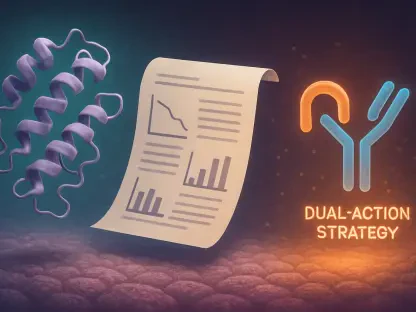In the vast realm of medical advancements, the emergence of Zevaskyn, an innovative gene therapy, offers new hope for patients grappling with recessive dystrophic epidermolysis bullosa (RDEB). This severe genetic disorder, characterized by fragile skin prone to blistering, requires groundbreaking solutions. A fundamental question arises: could Zevaskyn transform the landscape of care for such rare genetic conditions?
Beyond its intriguing nature, this breakthrough poses significant implications. Zevaskyn, now approved by the FDA, innovatively uses genetically altered skin cells to generate type VII collagen, addressing a key deficiency in RDEB patients. Its approval marks a milestone in gene therapy, especially given the chronic and painful wounds that characterize this condition.
Unraveling the Mystery of RDEB
RDEB stands as one of the most challenging connective tissue disorders, plaguing patients with severe blistering and fragile skin. The continuous wounds not only lead to immense physical discomfort but also impact the quality of life and mental health of those affected. Patients and caregivers face a relentless struggle to manage this condition, highlighting the need for a more effective therapeutic strategy.
Managing RDEB involves addressing chronic wounds and avoiding infections, a task that has long been arduous. Current treatments offer limited relief, leaving patients with a persistent burden. The demonstration of therapeutic potential in clinical settings emphasizes a need for innovation beyond conventional methods.
Zevaskyn’s Cutting-Edge Genetic Approach
Zevaskyn offers a breakthrough by tackling the root genetic cause of RDEB. It employs a novel mechanism where autologous skin cells, modified to produce type VII collagen, are surgically applied to wounds. This approach not only aims to heal the affected skin but also targets the relevant genetic defect in RDEB patients.
Clinical trials have substantiated Zevaskyn’s promise. In the phase 3 VIITAL study, an impressive 81% of treated wounds exhibited over 50% healing within six months, starkly contrasting with the mere 16% recovery rate from traditional treatments. The therapy’s positive outcomes are further corroborated by earlier studies showing its long-term efficacy and safety.
Insights from Industry Experts
Abeona Therapeutics, the company behind Zevaskyn, views this as a pivotal moment in gene therapy. CEO Vish Seshadri has articulated the importance of this development for RDEB patients, suggesting it could reshape treatment paradigms. Meanwhile, Chief Commercial Officer Madhav Vasanthavada has emphasized the therapy’s potential lasting results and the company’s commitment to facilitating broad patient access.
Experts in dermatology and gene therapy recognize the broader implications of Zevaskyn’s approval. These professionals see the therapy as a testament to the potential of genetic innovations in tackling severe hereditary conditions, predicting that its success could encourage further research and development in similar areas.
Implementing Zevaskyn in Treatment Protocols
The challenge now lies in effectively integrating Zevaskyn into clinical practice. Efforts to ensure wide availability focus on creating collaborative frameworks between healthcare providers and Abeona Therapeutics. Strategies include implementing outcome-based agreements that not only prioritize patient access but also provide financial sustainability.
A critical component of deployment involves training clinicians and establishing protocols to standardize Zevaskyn’s use across medical centers. These initiatives aim to maximize therapeutic outcomes, ensuring patients benefit fully from this novel treatment.
In retrospect, the advent of Zevaskyn represented a remarkable turning point in treating RDEB. By addressing the genetic roots of this debilitating disorder, it offered renewed hope to patients and caregivers. The future of genetic therapies to tackle rare diseases like RDEB envisioned possibilities that extended beyond the present success of Zevaskyn, promising new avenues for innovation.









